Luke-Acts 2
Mike Ervin
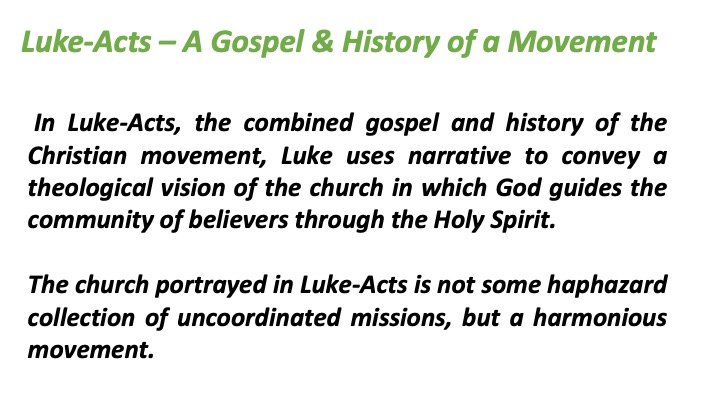
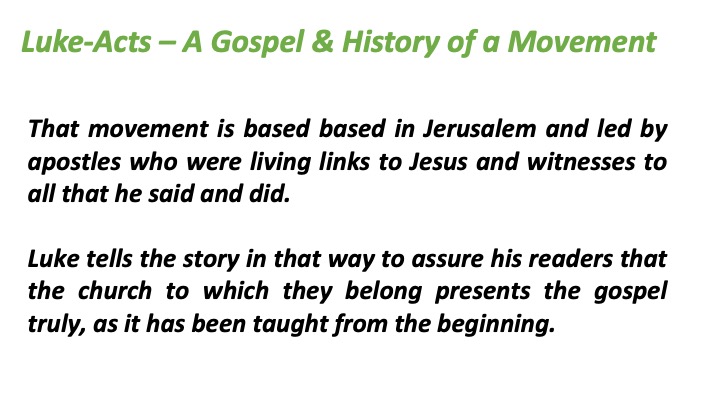
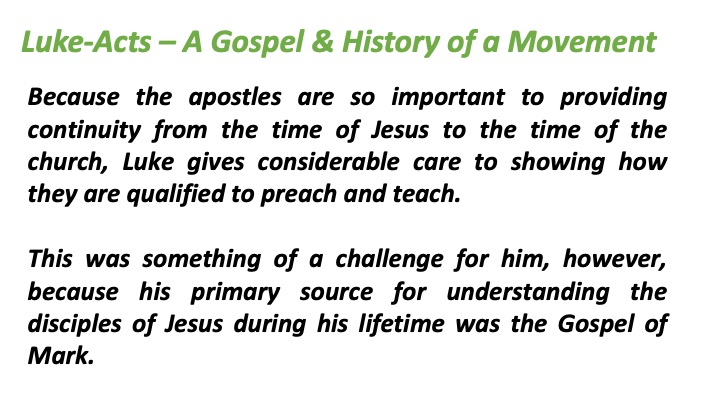
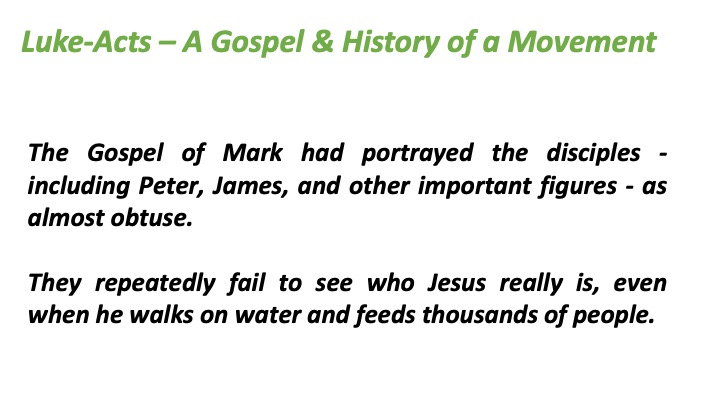
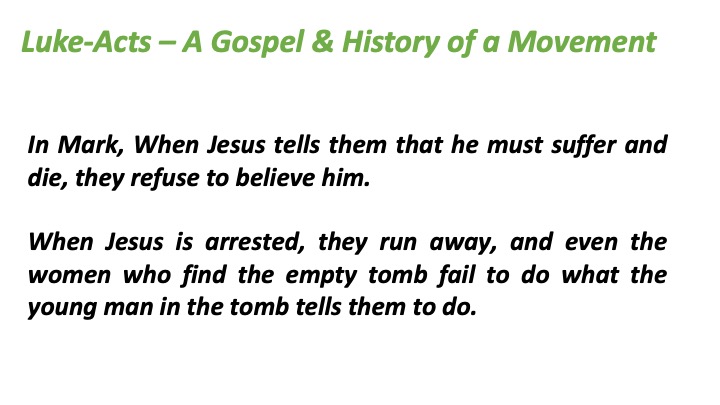
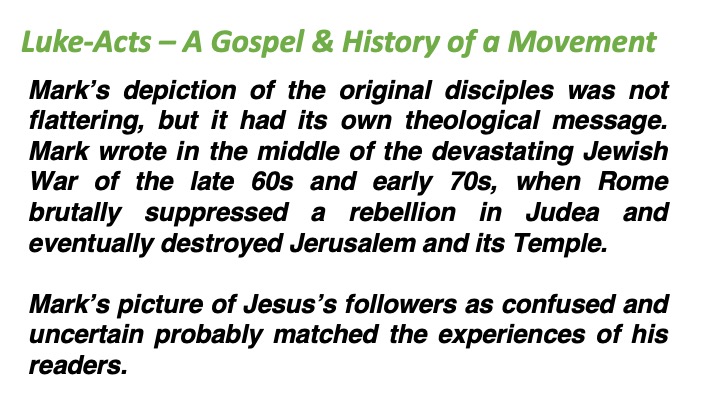
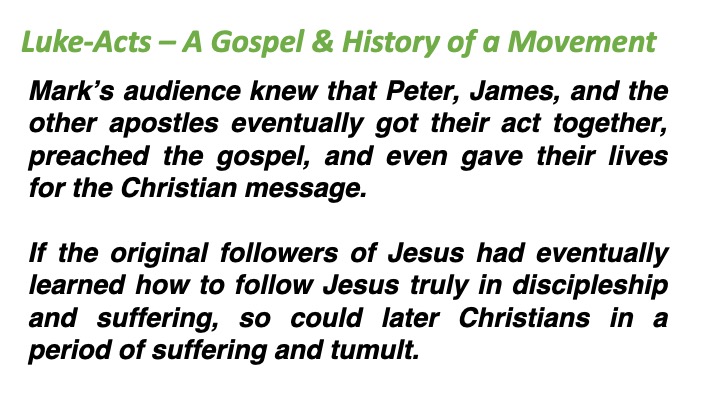
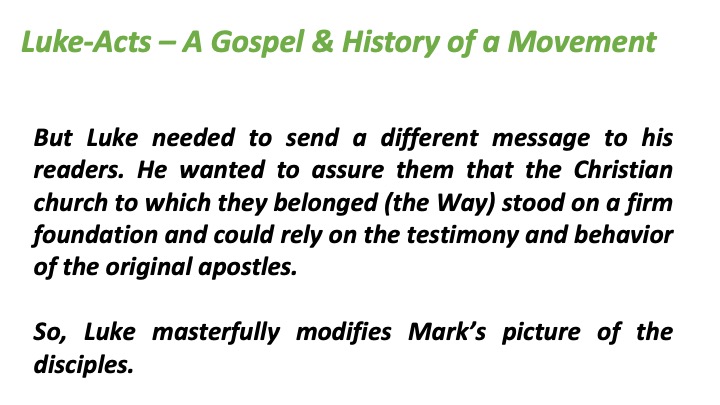
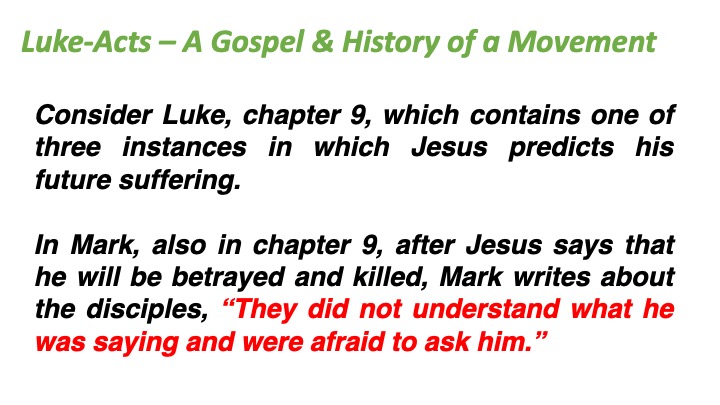
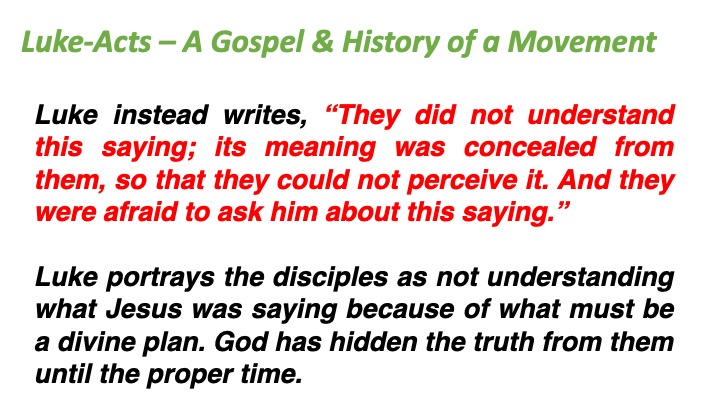

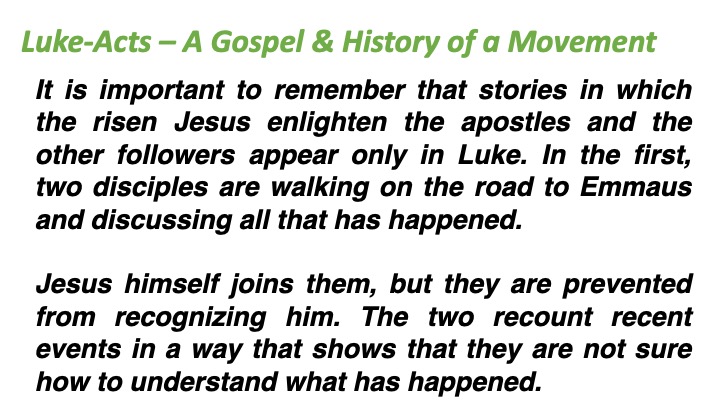
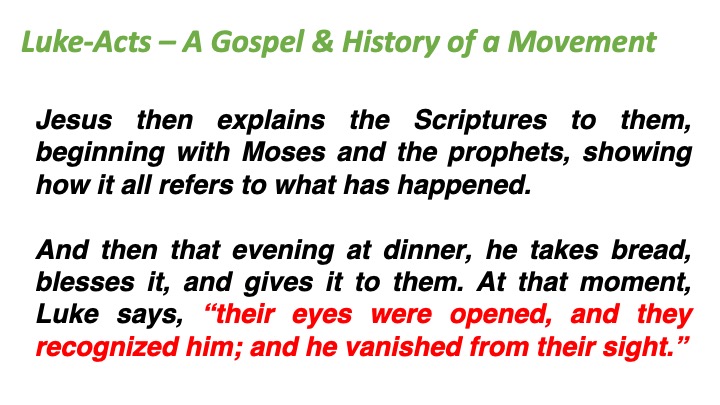
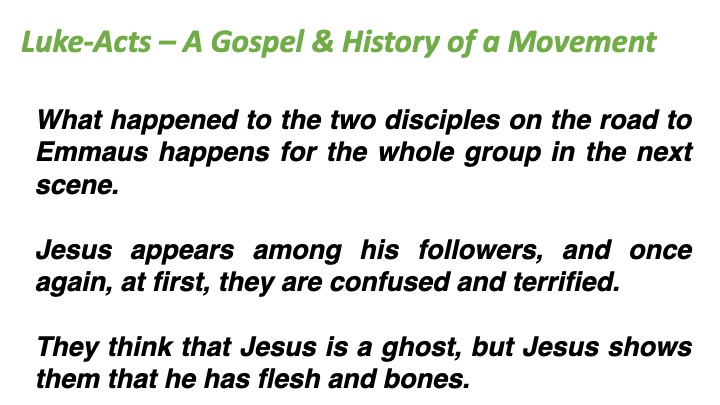
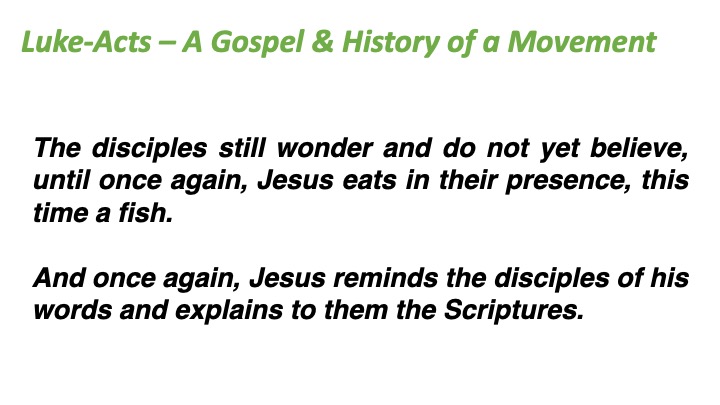
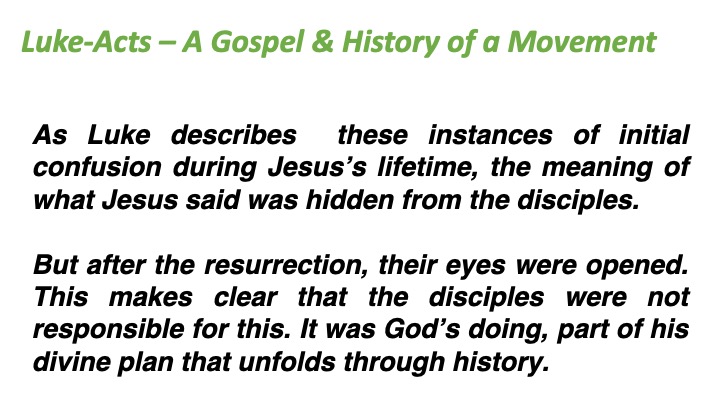
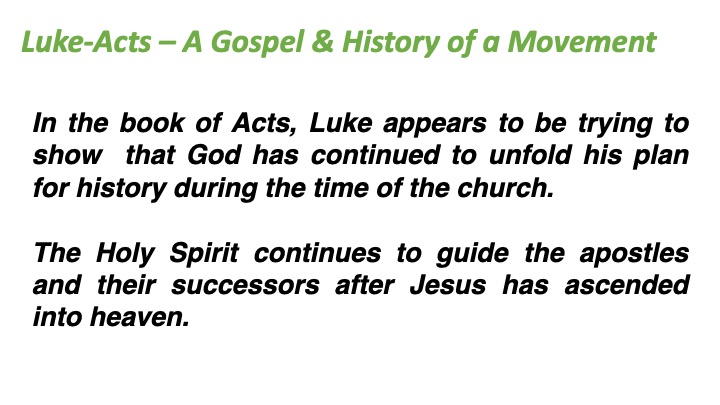
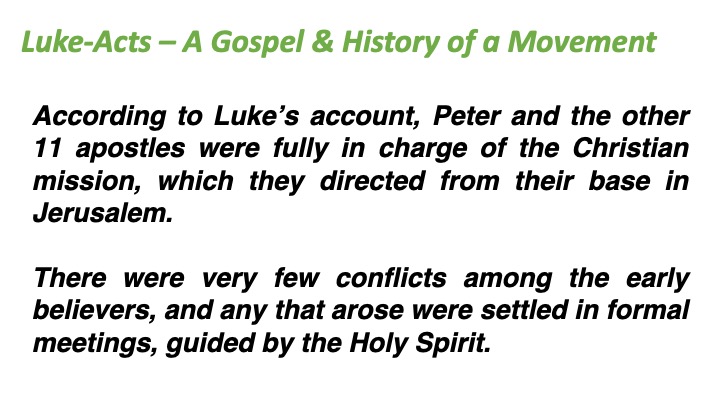
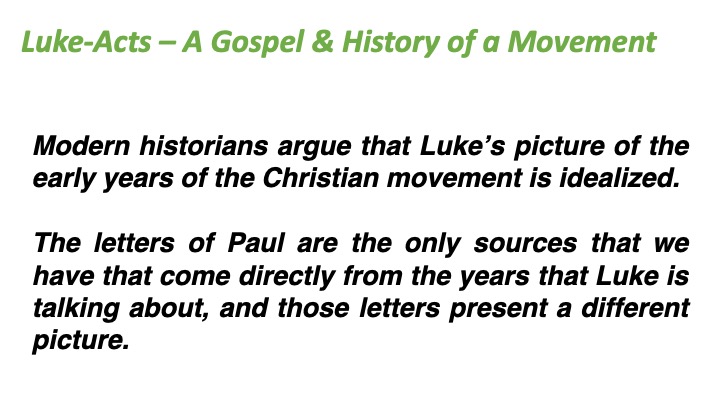
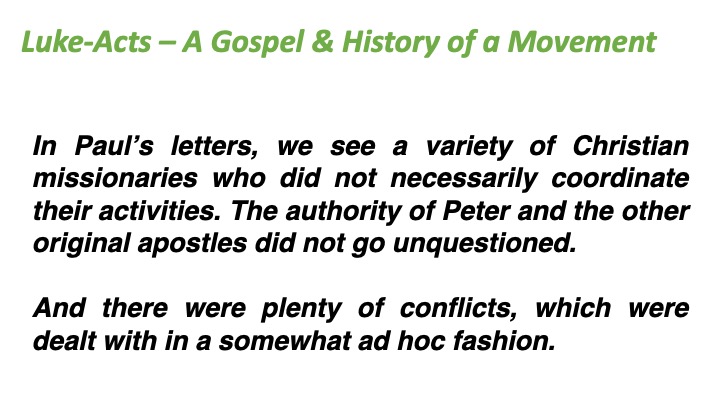
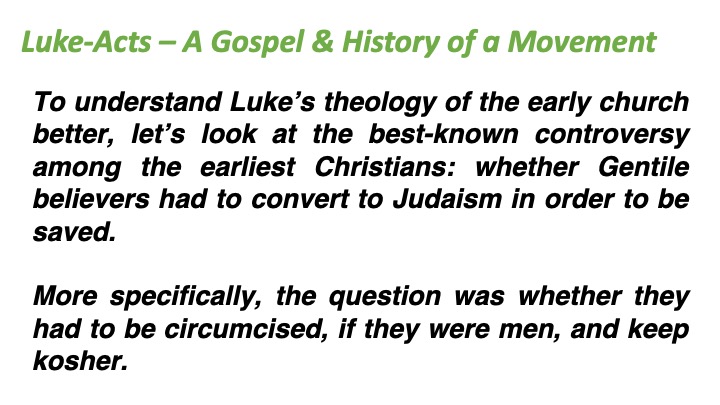
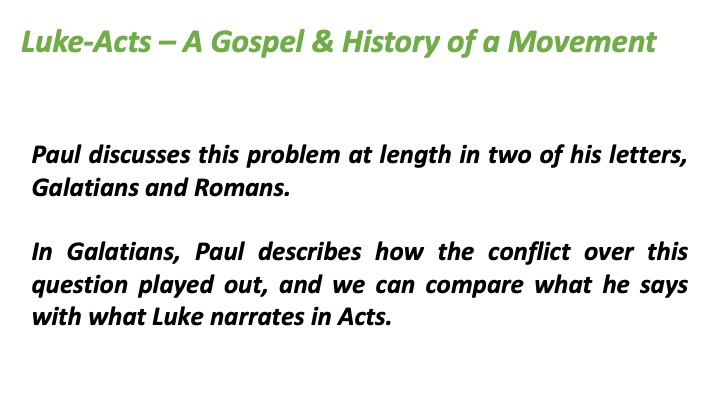
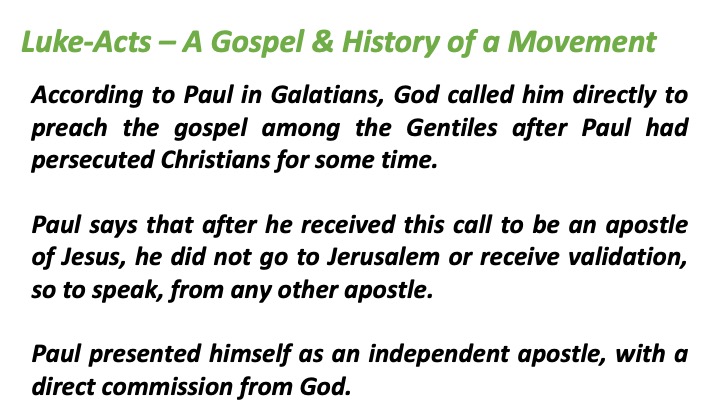
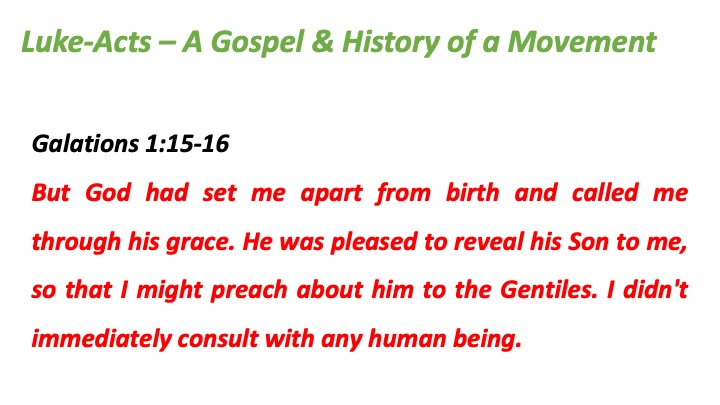
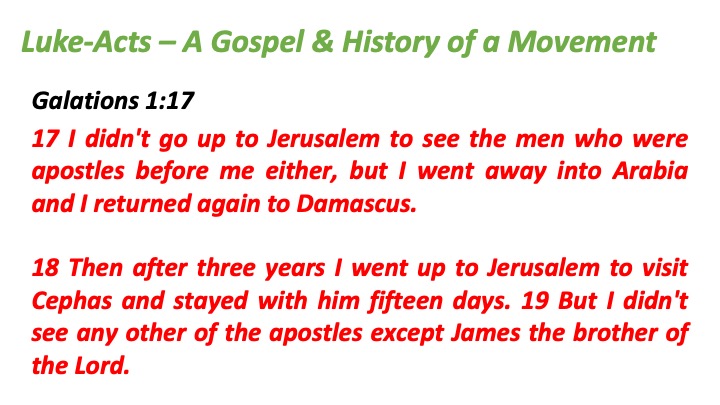
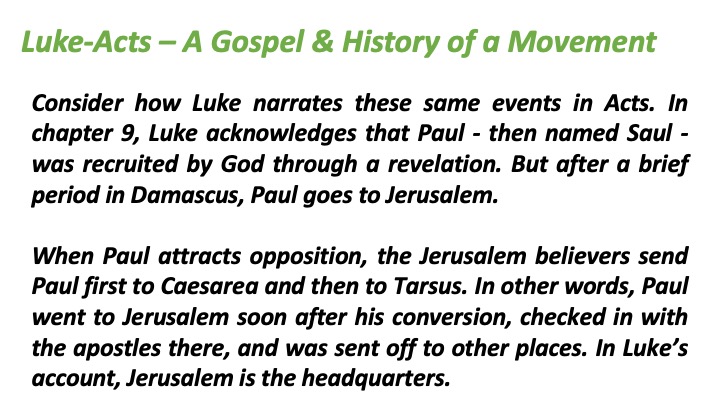
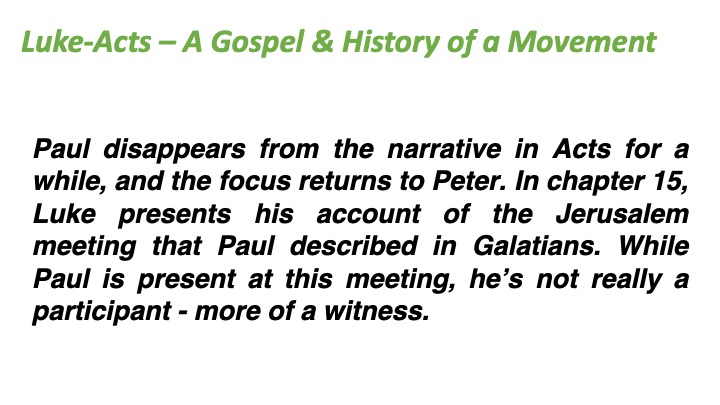
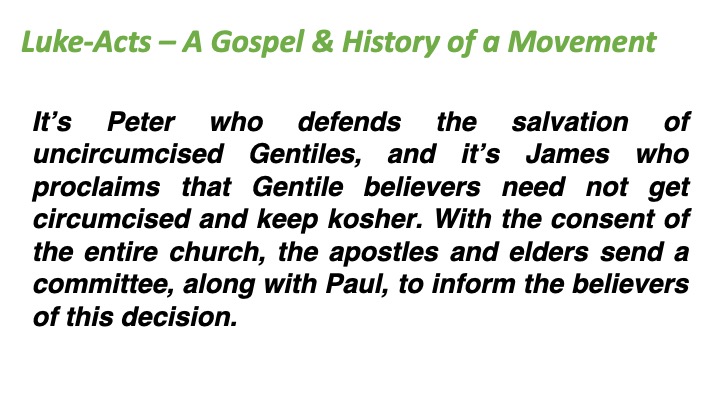
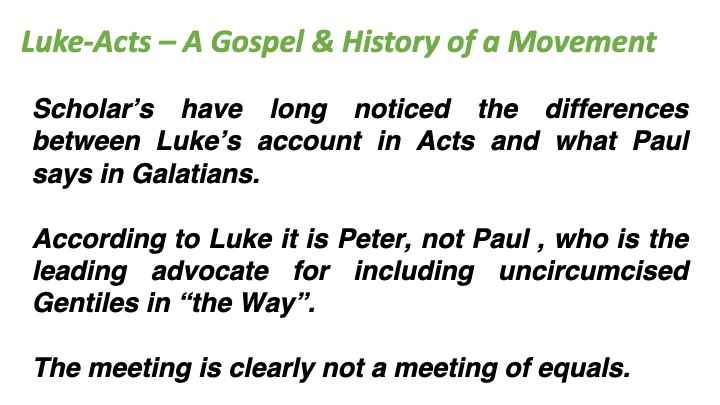
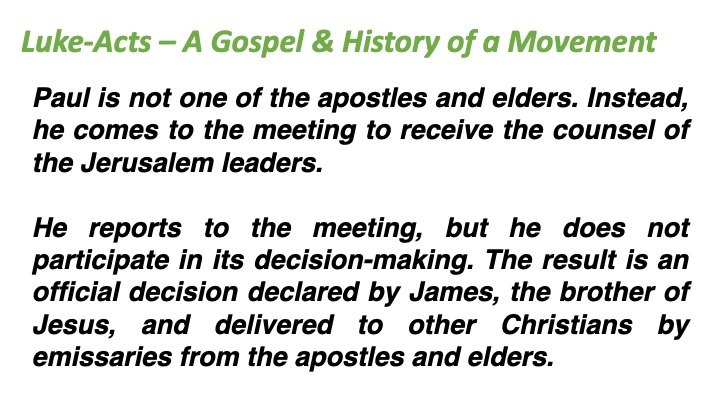
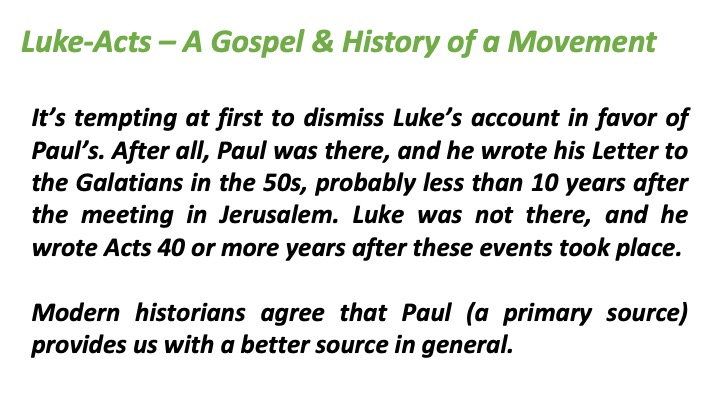
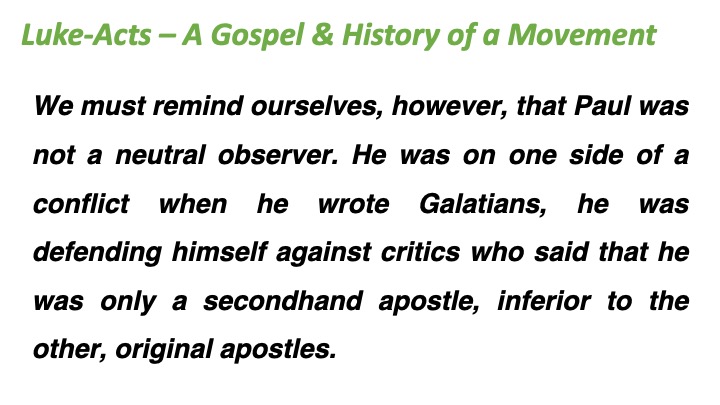
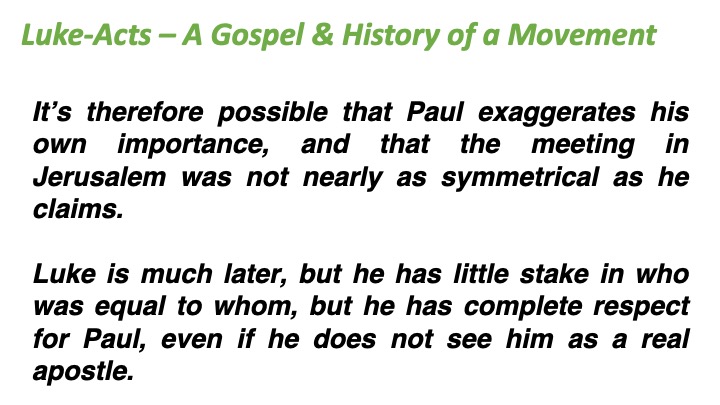
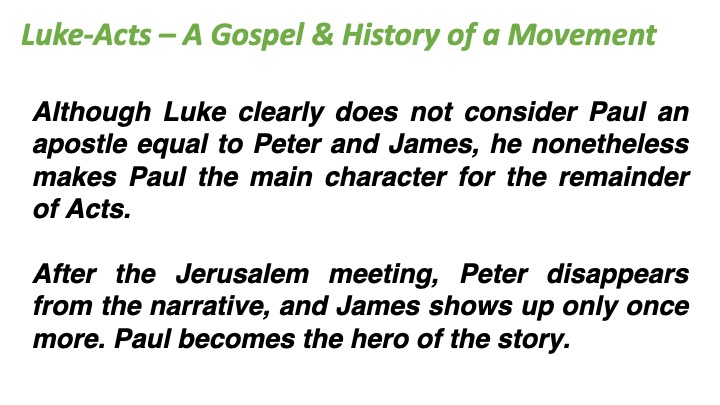
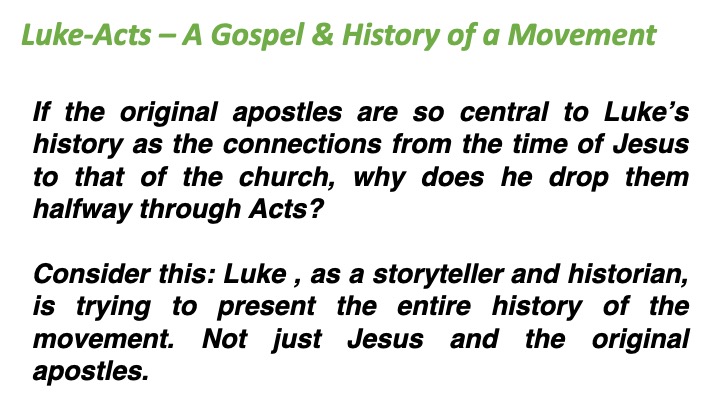
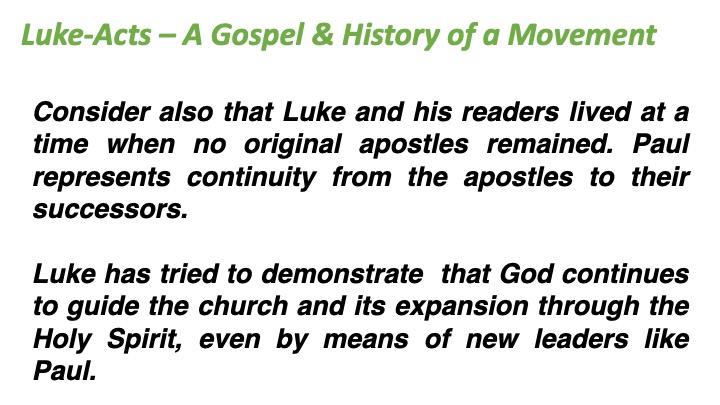
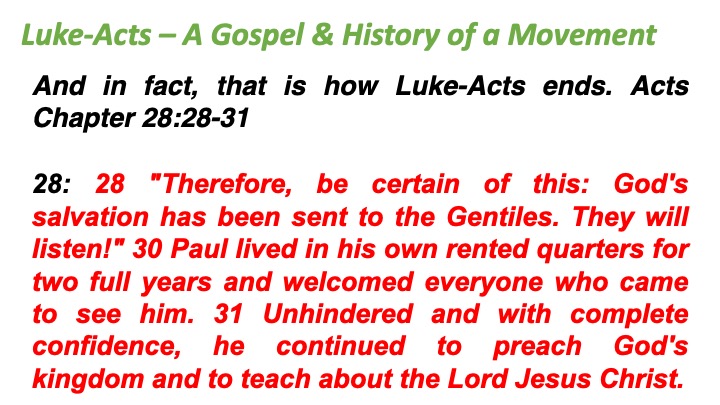
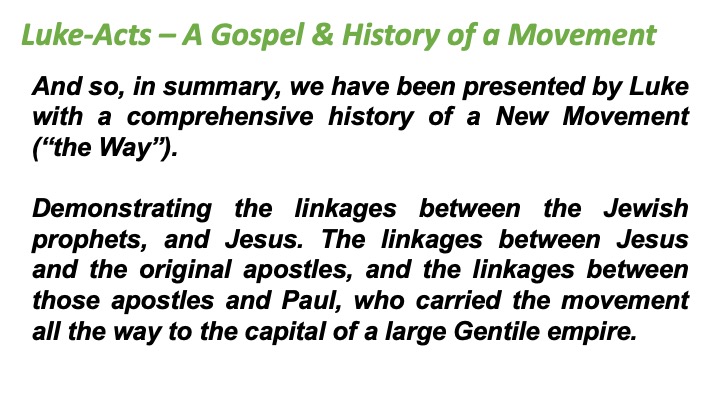
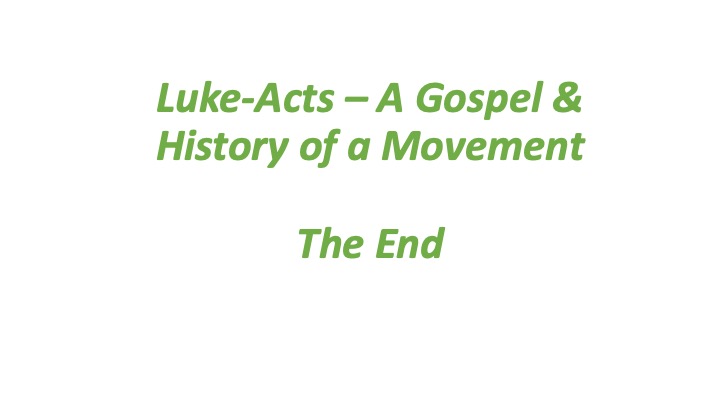
Luke-Acts
Links
< Home Page > < Luke-Acts Menu > < Top of Page >
Luke-Acts
In Luke-Acts, the combined gospel and history of the Christian movement, Luke uses narrative to convey a theological vision of the church in which God guides the community of believers through the Holy Spirit.
The church portrayed in Luke-Acts is not some haphazard collection of uncoordinated missions, but a harmonious movement.
That movement is based in Jerusalem and led by apostles who were living links to Jesus and witnesses to all that he said and did.
Luke tells the story in that way to assure his readers that the church to which they belong presents the gospel truly, as it has been taught from the beginning.
Because the apostles are so important to providing continuity from the time of Jesus to the time of the church, Luke gives considerable care to showing how they are qualified to preach and teach.
This was something of a challenge for him, however, because his primary source for understanding the disciples of Jesus during his lifetime was the Gospel of Mark.
The Gospel of Mark had portrayed the disciples—including Peter, James, and other important figures—as obtuse.
They repeatedly fail to see who Jesus really is, even when he walks on water and feeds thousands of people.
In Mark, When Jesus tells them that he must suffer and die, they refuse to believe him.
When Jesus is arrested, they run away, and even the women who find the empty tomb fail to do what the young man in the tomb tells them to do.
Luke-Acts
Mark’s depiction of the original disciples was not flattering, but it had its own theological message. Mark wrote in the middle of the devastating Jewish War of the late 60s and early 70s, when Rome brutally suppressed a rebellion in Judea and eventually destroyed Jerusalem and its Temple.
Mark’s picture of Jesus’s followers as confused and uncertain probably matched the experiences of his readers.
Mark’s audience knew that Peter, James, and the other apostles eventually got their act together, preached the gospel, and even gave their lives for the Christian message.
If the original followers of Jesus had eventually learned how to follow Jesus truly in discipleship and suffering, so could later Christians in a period of suffering and tumult.
But Luke needed to send a different message to his readers. He wanted to assure them that the Christian church to which they belonged stood on a firm foundation and could rely on the testimony and behavior of the original apostles.
So, Luke masterfully modifies Mark’s picture of the disciples.
Luke-Acts
Consider Luke, chapter 9, which contains one of three instances in which Jesus predicts his future suffering.
In Mark, also in chapter 9, after Jesus says that he will be betrayed and killed, Mark writes about the disciples, “They did not understand what he was saying and were afraid to ask him.”
Luke instead writes, “They did not understand this saying; its meaning was concealed from them, so that they could not perceive it. And they were afraid to ask him about this saying.”
Luke portrays the disciples as not understanding what Jesus was saying because of what must be a divine plan. God has hidden the truth from them until the proper time.
That proper time is the period between Jesus’s resurrection and his ascension into heaven 40 days later.
That’s the moment of transition between the time of Jesus and that of the the Way, and that’s when the disciples receive their education in the Scriptures and in the meaning of Jesus.
It is important to remember that stories in which the risen Jesus enlighten the apostles and the other followers appear only in Luke. In the first, two disciples are walking on the road to Emmaus and discussing all that has happened.
Jesus himself joins them, but they are prevented from recognizing him. The two recount recent events in a way that shows that they are not sure how to understand what has happened.
Jesus then explains the Scriptures to them, beginning with Moses and the prophets, showing how it all refers to what has happened.
An then that evening at dinner, he takes bread, blesses it, and gives it to them. At that moment, Luke says, “their eyes were opened, and they recognized him; and he vanished from their sight.”
What happened to the two disciples on the road to Emmaus happens for the whole group in the next scene.
Jesus appears among his followers, and once again, at first they are confused and terrified.
They think that Jesus is a ghost, but Jesus shows them that he has flesh and bones.
The disciples still wonder and do not yet believe, until once again, Jesus eats in their presence, this time a fish.
And once again, Jesus reminds the disciples of his words and explains to them the Scriptures.
Luke describes these instances of initial confusion during Jesus’s lifetime, the meaning of what Jesus said was hidden from the disciples.
But after the resurrection, their eyes were opened. This makes clear that the disciples were not responsible for this. It was God’s doing, part of his divine plan that unfolds through history.
Luke-Acts
In the book of Acts, Luke appears to be trying to show that God has continued to unfold his plan for history during the time of the church.
The Holy Spirit continues to guide the apostles and their successors after Jesus has ascended into heaven.
According to Luke’s account, Peter and the other 11 apostles were fully in charge of the Christian mission, which they directed from their base in Jerusalem.
There were very few conflicts among the early believers, and any that arose were settled in formal meetings, guided by the Holy Spirit.
Modern historians argue that Luke’s picture of the early years of the Christian movement is idealized.
The letters of Paul are the only sources that we have that come directly from the years that Luke is talking about, and those letters present a different picture.
In Paul’s letters, we see a variety of Christian missionaries who did not necessarily coordinate their activities. The authority of Peter and the other original apostles did not go unquestioned.
And there were plenty of conflicts, which were dealt with in a somewhat ad hoc fashion.
Luke-Acts
To understand Luke’s theology of the early church better, let’s look at the best known controversy among the earliest Christians: whether Gentile believers had to convert to Judaism in order to be saved.
More specifically, the question was whether they had to be circumcised, if they were men, and keep kosher.
Paul discusses this problem at length in two of his letters, Galatians and Romans.
In Galatians, Paul describes how the conflict over this question played out, and we can compare what he says with what Luke narrates in Acts.
According to Paul in Galatians, God called him directly to preach the gospel among the Gentiles after Paul had persecuted Christians for some time.
Paul says that after he received this call to be an apostle of Jesus, he did not go to Jerusalem or receive validation, so to speak, from any other apostle.
Paul presented himself as an independent apostle, with a direct commission from God.
Galations 1:15-16
But God had set me apart from birth and called me through his grace. He was pleased to reveal his Son to me, so that I might preach about him to the Gentiles. I didn't immediately consult with any human being.
Galations 1:17
17 I didn't go up to Jerusalem to see the men who were apostles before me either, but I went away into Arabia and I returned again to Damascus.
18 Then after three years I went up to Jerusalem to visit Cephas and stayed with him fifteen days. 19 But I didn't see any other of the apostles except James the brother of the Lord.
Luke-Acts
Paul disappears from the narrative in Acts for a while, and the focus returns to Peter. In chapter 15, Luke presents his account of the Jerusalem meeting that Paul described in Galatians. While Paul is present at this meeting, he’s not really a participant—more of a witness.
It’s Peter who defends the salvation of uncircumcised Gentiles, and it’s James who proclaims that Gentile believers need not get circumcised and keep kosher. With the consent of the entire church, the apostles and elders send a committee, along with Paul, to inform the believers of this decision.
Scholar’s have long noticed the differences between Luke’s account in Acts and what Paul says in Galatians.
According to Luke it is Peter, not Paul , who is the leading advocate for including uncircumcised Gentiles in “the Way”.
The meeting is clearly not a meeting of equals.
Paul is not one of the apostles and elders. Instead, he comes to the meeting to receive the counsel of the Jerusalem leaders.
He reports to the meeting, but he does not participate in its decision-making. The result is an official decision declared by James, the brother of Jesus, and delivered to other Christians by emissaries from the apostles and elders.
It’s tempting at first to dismiss Luke’s account in favor of Paul’s. After all, Paul was there, and he wrote his Letter to the Galatians in the 50s, probably less than 10 years after the meeting in Jerusalem. Luke was not there, and he wrote Acts 40 or more years after these events took place.
Modern historians agree that Paul (a primary source) provides us with a better source in general.
We must remind ourselves, however, that Paul was not a neutral observer. He was on one side of a conflict when he wrote Galatians, he was defending himself against critics who said that he was only a secondhand apostle, inferior to the other, original apostles.
It’s therefore possible that Paul exaggerates his own importance, and that the meeting in Jerusalem was not nearly as symmetrical as he claims.
Luke is much later, but he has little stake in who was equal to whom, but he has complete respect for Paul, even if he does not see him as a real apostle.
Luke-Acts
Although Luke clearly does not consider Paul an apostle equal to Peter and James, he nonetheless makes Paul the main character for the remainder of Acts.
After the Jerusalem meeting, Peter disappears from the narrative, and James shows up only once more. Paul becomes the hero of the story.
If the original apostles are so central to Luke’s history as the connections from the time of Jesus to that of the church, why does he drop them halfway through Acts?
Consider this: Luke , as a storyteller and historian, is trying to present the entire history of the movement. Not just Jesus and the original apostles.
Consider also that Luke and his readers lived at a time when no original apostles remained. Paul represents continuity from the apostles to their successors.
Luke has tried to demonstrate that God continues to guide the church and its expansion through the Holy Spirit, even by means of new leaders like Paul.
And in fact, that is how Luke-Acts ends. Acts Chapter 28:28-31
28: 28 "Therefore, be certain of this: God's salvation has been sent to the Gentiles. They will listen!" 30 Paul lived in his own rented quarters for two full years and welcomed everyone who came to see him. 31 Unhindered and with complete confidence, he continued to preach God's kingdom and to teach about the Lord Jesus Christ.
And so, in summary, we have been presented by Luke with a comprehensive history of a New Movement (“the Way”).
Demonstrating the linkages between the Jewish prophets, and Jesus. The linkages between Jesus and the original apostles, and the linkages between those apostles and Paul, who carried the movement all the way to the capital of a large Gentile empire.